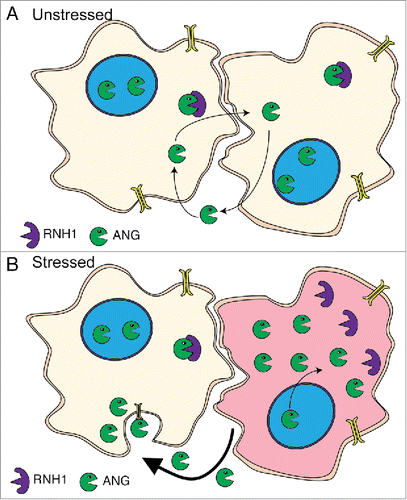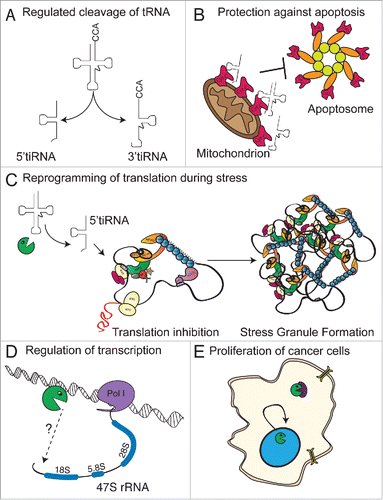Figures & data
Figure 1. ANG localization regulates its activity. (A) In unstressed cells, ANG (Green) is primarily localized in the nucleus. The cytoplasmic pool of ANG is held in an inactive state through interaction with RNH1 (Purple). A minor pool of ANG is secreted, found in serum and is able to be taken up by surrounding cells. (B) In a stressed cell (red), ANG dissociates from RNH1 and relocalizes from the nucleus to the cytoplasm. ANG expression is also induced, likely as a result of increased transcription. Stressed cells actively secrete ANG to surrounding cells which take up ANG via a receptor mediated endocytosis.

Figure 2. RNase dependent functions of ANG. (A) ANG cleaves the anticodon loop of mature cytoplasmic tRNAs generating 2 smaller RNA species, termed 5′- and 3′- tiRNAs. (B) A subset of 5′ and 3′ tiRNAs bind to Cytochrome C (red) preventing it's interaction with the apoptosome. Failure to assemble the apoptosome promotes survival by preventing apopotosis. (C) A subset of 5′tiRNAs inhibit translation by targeting the initiation step thereby promoting the formation of stress granules. (D) ANG is translocated to the nucleus where it promotes the expression of rRNA. (E) Increased expression of ANG increases proliferation of cancer cells linked to nuclear import.

